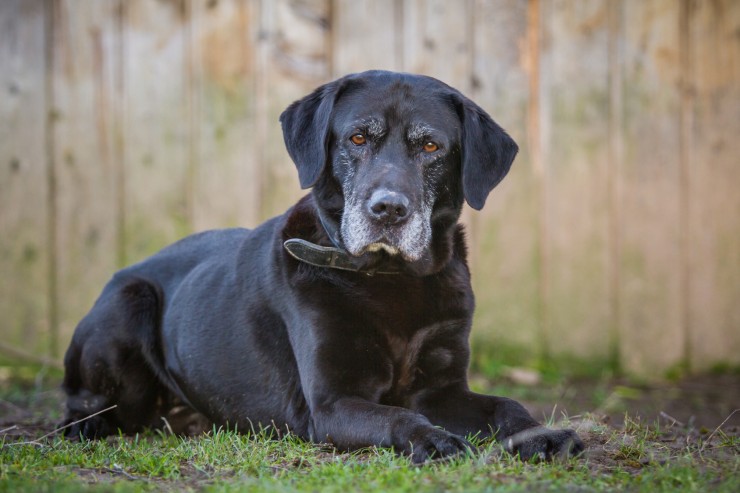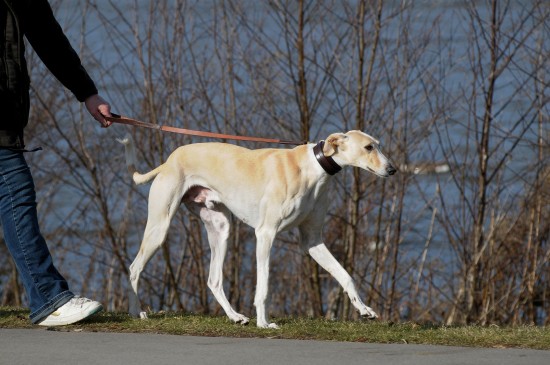

Hopefully, your dog will never lose the spring in their step and will stay mobile throughout their lives, but as dogs age, many of them find it harder or less comfortable to get around than they used to, and some dogs may even lose the ability to move around without help at all.
If your dog’s front or hind legs are weakening due to age, if your dog has an accident that affects their spine or limbs, or if your dog suffers from a conformation problem or physical defect that means that they cannot walk properly or cannot walk unaided, you might well think that your dog has reached the end of the line-but there may be another way.
If your dog is losing their normal range of movement, is suffering from a mobility problem or has a conformation problem that may be leading to progressive disability, such as can affect short-legged, long-spined breeds such as the Dachshund, you are probably wondering if there is anything that you can do to help to keep your dog mobile and restore their quality of life.
Whilst not every dog owner is prepared to consider some of the various options available for helping to keep their dog mobile and happy with assistance, many others make use of some of the various different products and ideas that can help to support disabled dogs, and help them to carry on enjoying their lives!
In this article, we will look at some of the various options available for doing just this, plus discuss some of the concerns and considerations that you should bear in mind when making your decision on how to proceed. Read on to learn more about mobility options and aids for disabled dogs!
A quick point to note-dogs that need to have any one of their four legs amputated will usually be able to get around perfectly well on their own without help after their recovery, and will rarely need any assistance! The devices, techniques and suggestions made here may be useful for dogs who have restricted usage of two or more of their legs, or spinal problems that affect both the spine itself and normal movement.
If your dog has a problem with certain specific joints, such as may occur in an older dog at the site of an old injury or if your dog’s joints are simply failing with age, you may be able to help to support this and keep your dog mobile in comfort by using a simple compression bandage or joint support wrap! These work in a similar way to sports support devices for people, such as elbow and knee wraps, which help to provide strength and support and allow you to carry on enjoying doing the things that you like to do!
While joint support bandages and wraps are not suitable for all dogs, and are only viable for dogs who have a problem with the leg, knee, ankle or foot joints rather than the spine or hips, it is definitely worth talking to your vet about wraps and other options that you can use to help your dog to exercise in comfort.
Support slings are the most commonly used mobility support system for dogs, and are sometimes used for the long term in dogs that need them, or for a short while only to help with a specific problem or assist with recovery after surgery.
Slings consist of a literal sling of strong, cushioned fabric, which supports the belly of your dog and allows them to take the pressure off either their front or rear legs, whilst walking as normal on their remaining good legs. The handler or owner of the dog will hold the handles of the sling, essentially taking some of the weight of the dog off their legs and allowing them to move around.
Depending on the size of the dog in question, you do need to have a strong back and arms yourself to be able to work with a support sling, and also it is important to note that they do mean that without the sling, your dog’s movement will remain limited.
A final option that is much more widely spread in America than it is in the UK, but which is becoming ever-more widely used here, particularly for Dachshunds, are wheeled slings or essentially, wheelchairs for dogs!
Most canine wheelchairs are designed to support the back legs by means of a harness, whilst leaving the front legs free to walk normally, however, front-leg options are also available.
Once the dog has got used to walking with wheels, they will normally be fairly fast about it, and able to join in with the normal play and socialisation of other dogs, and run around too! However, again, without their wheels on, the dog’s movement will be limited to its previous state, and owners of dogs that use a wheeled harness should also take care to keep a lookout for signs of rubbing or pressure sores from the harness itself, which you may have to order specially or have made to order.
For some dog owners, the idea of using devices such as a sling or doggy wheelchair for the long term is something that they simply won’t consider, due to the quality of life implications that a permanent loss of mobility can have on the dog.
However, other dog owners who are willing to have a go say that restoring their dog’s mobility in these ways has given their dog a whole new lease of life, and allowed them to get back to virtually their normal selves, and happily too!
There is no right or wrong answer for every dog and their owner, but regardless of what you do decide, the chances are that you will spend a lot of time considering your eventual decision. Your vet should work closely with both you and your dog when it comes to establishing viable mobility options and the best way to proceed, and they can provide you with a lot of advice in this area, but ultimately, the final decision will be up to you.
 The Difference Between A Bearded Collie And A Polish Lowland Sheepdog
The Difference Between A Bearded Collie And A Polish Lowland Sheepdog
 How To Bond With Your Cat
How To Bond With Your Cat
 The Chart Polski - The Polish Greyhound
The Chart Polski - The Polish Greyhound
 Goat fence which has a range associated with flexibility and eyes
Goat fence which has a range associated with flexibility and eyes
 Why Walking And Exercising Your Dog Enough Is So Important
Why Walking And Exercising Your Dog Enough Is So Important
 The Difference Between A Smooth Coated Fox Terrier And A Rat Terrier
The Difference Between A Smooth Coated Fox Terrier And A Rat Terrier
 Which Breed Of Spaniel Would Suit Your Lifestyle Best
Which Breed Of Sp
Which Breed Of Spaniel Would Suit Your Lifestyle Best
Which Breed Of Sp
 New Year, New Pet?
New Year, New Pet
New Year, New Pet?
New Year, New Pet
 Something Smells Fishy; Keeping Your Fish Tank From Smelling
Something Smells
Something Smells Fishy; Keeping Your Fish Tank From Smelling
Something Smells
 Tips On Getting Your Horse Ready This Spring
Tips On Getting Y
Tips On Getting Your Horse Ready This Spring
Tips On Getting Y
 Produce the servicing patched with amazing goat fence alternative
Produce the servicing patched with amazing goat fence alte
Produce the servicing patched with amazing goat fence alternative
Produce the servicing patched with amazing goat fence alte
Copyright © 2005-2016 Pet Information All Rights Reserved
Contact us: www162date@outlook.com